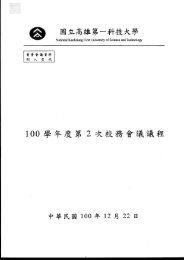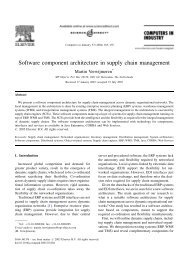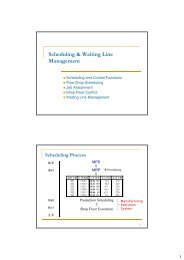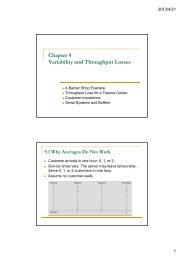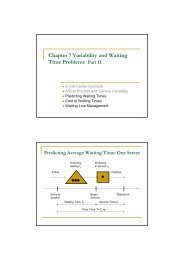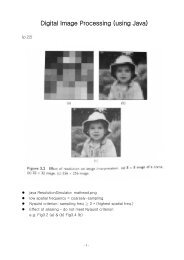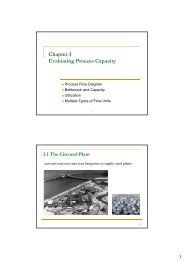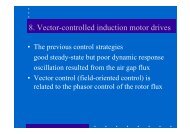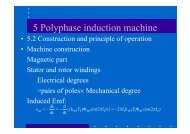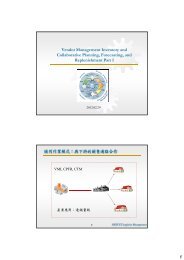Chapter 6 Scaling Laws in Miniaturization
Chapter 6 Scaling Laws in Miniaturization
Chapter 6 Scaling Laws in Miniaturization
Create successful ePaper yourself
Turn your PDF publications into a flip-book with our unique Google optimized e-Paper software.
<strong>Scal<strong>in</strong>g</strong> <strong>in</strong> Effect of Heat Conduction <strong>in</strong> Solids of Meso- and Micro-scales• A dimensionless number, called the Fourier number, F 0 is used to determ<strong>in</strong>e thetime <strong>in</strong>crements <strong>in</strong> a transient heat conduction analysis.αtL- F0=2where α: thermal diffusivity of the material, and t: time for heat toflow across the characteristic length L.F- t = L α0 2 2∝ l6.8.2 <strong>Scal<strong>in</strong>g</strong> <strong>in</strong> Heat Convection ( 對 流 )• Heat transfer <strong>in</strong> fluid is <strong>in</strong> the mode of convection (Newton’s cool<strong>in</strong>g law),Q = qA = hA∆T(6.32)where Q: total heat flow between two plates; q: heat flux; A: cross-sectional area forthe heat flow; h: heat transfer coefficient;two po<strong>in</strong>ts.∆ T: temperature difference between these- h: depends primarily on the fluid velocity, which does not play asignificant role <strong>in</strong> the scal<strong>in</strong>g of the heat flow.- Thus, <strong>in</strong> meso- and micro-regimes,Q ∝ A ∝ l2• For the cases <strong>in</strong> which gases pass <strong>in</strong> narrow channels at submicro-meter scale,‣ The classical heat transfer theories based on cont<strong>in</strong>uum fluids breakdown.‣ The seem<strong>in</strong>gly convective heat transfer has <strong>in</strong> fact become conductionof heat among the gas molecules as the effect of the boundary layerbecomes a dom<strong>in</strong>ant factor.‣ In Fig. 6.9, H < 7λwhere λ =65nm for gases, and 1.3 μm for liquids.11



